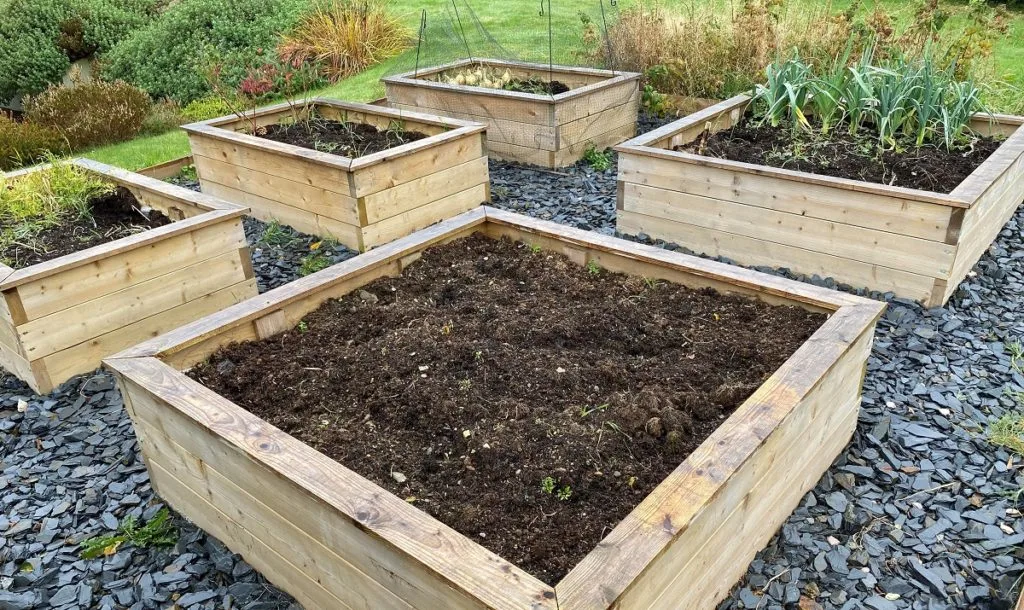
By now, things are starting to wind down in the garden. There’s a nip in the air and soon you’ll be harvesting your last vegetable and pulling up your spent crops after months of nurturing.
It’s bittersweet. But once the beds are cleared, you might be thinking the gardening season is done and finished.
Not necessarily!
The comfortably cool temperatures in fall are the perfect time to get a head start on next season’s growth.
Do these preps now and your future self will thank you.
1. Plant Garlic
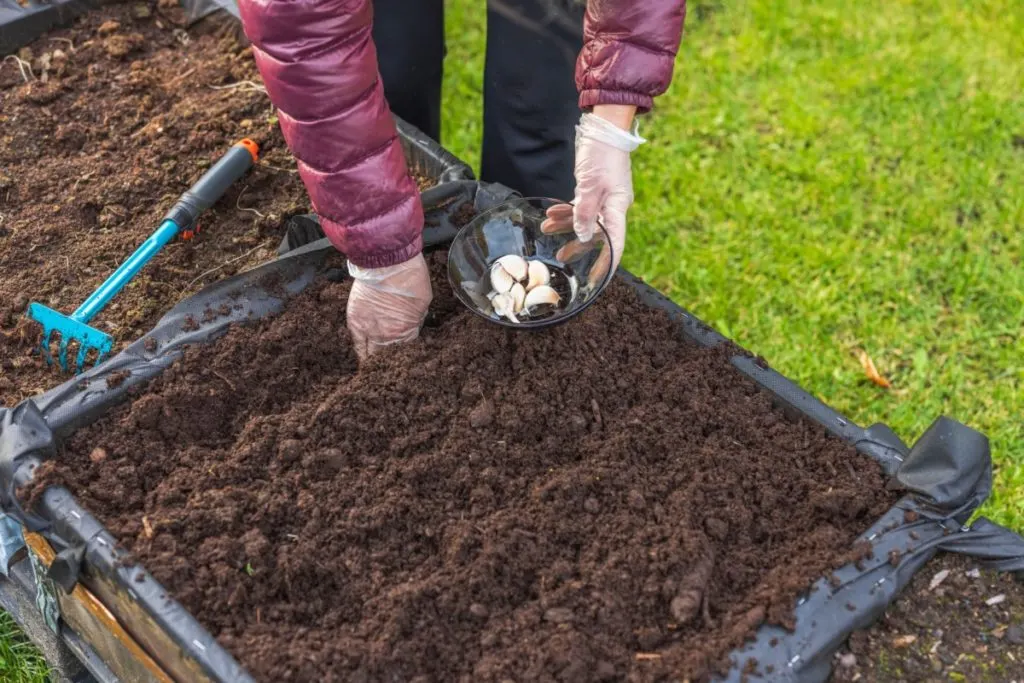
Garlic cloves planted in autumn are often superior in size and flavor to those first planted in spring.
By giving them a month or two to set down roots while the soil is still warm in fall, the bulbs will be that much farther along in development when the ground thaws in March and April.
Once things warm up again, garlic plants will grow quickly. The green shoots will be one of the first things to rise up to greet you in spring.
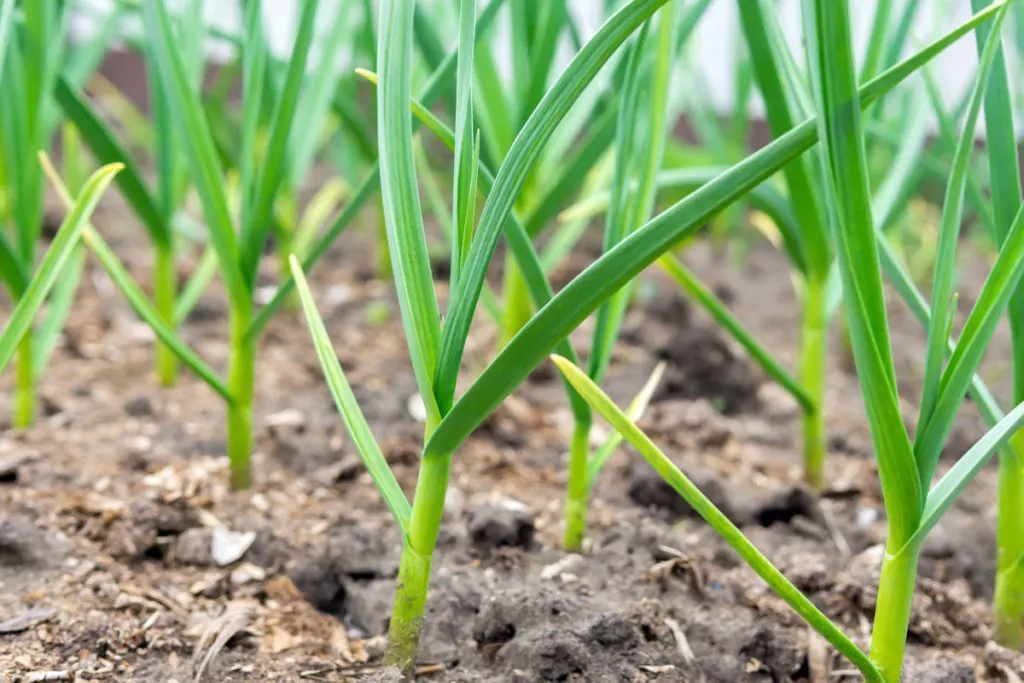
The extra growing time means you have large bulbs to harvest from in mid-summer. If you wait to plant garlic in spring, the bulbs will be smaller or only single-cloved, and not ready to harvest until fall.
The best time to seed your fall garlic patch is mid-September through to November.
The sooner you can get them in the ground, though, the more roots they will grow.
Read more: How to Plant Garlic in the Fall
2. Sow Onions
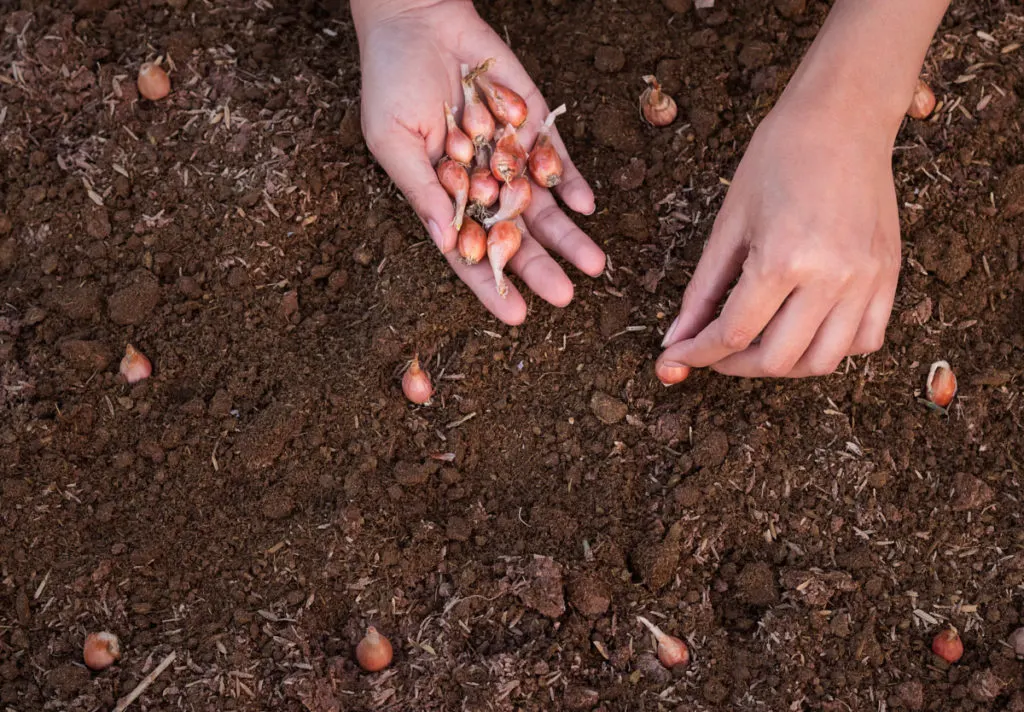
Onions are another Allium that benefits from a fall planting. Nestle these into the soil now and they will be hardier plants overall come spring.
The most expedient way to have huge juicy bulbs for next year’s harvest is to use onion sets. These immature bulbs are about a year old. When planted in autumn, onion sets will have a sizeable growth advantage over onions started from seed.
Onion sets can be planted in the garden 4 to 6 weeks before the first hard freeze.
Though the bulbs will be smaller at harvest, you can start onions from seed in fall too. Sow onion seeds directly into the garden at least 8 to 10 weeks before the first frost.
Immediately after sowing, add a thin layer of mulch. This will safeguard the bed from weeds while keeping the soil moist.
When sprouts have poked through the soil, apply some more mulch to help keep the bulbs below nice and toasty.
Just before the first frost, add another few inches of mulch. Mulching heavily just before the cold sets in will allow them to continue growing those roots. And more roots means bigger bulbs.
Read more: Grow Onions – The Total Guide to Growing from Seeds or Sets
3. Grow Cool Season Crops
Leafy greens like kale, lettuce, spinach, arugula, and Swiss chard have the remarkable ability to survive (and even thrive) in cool temperatures.
Insulate these greens by mulching around plants heavily. Invest in a floating row cover and you will be able to keep harvesting these cut-and-come-again cultivars long into winter.
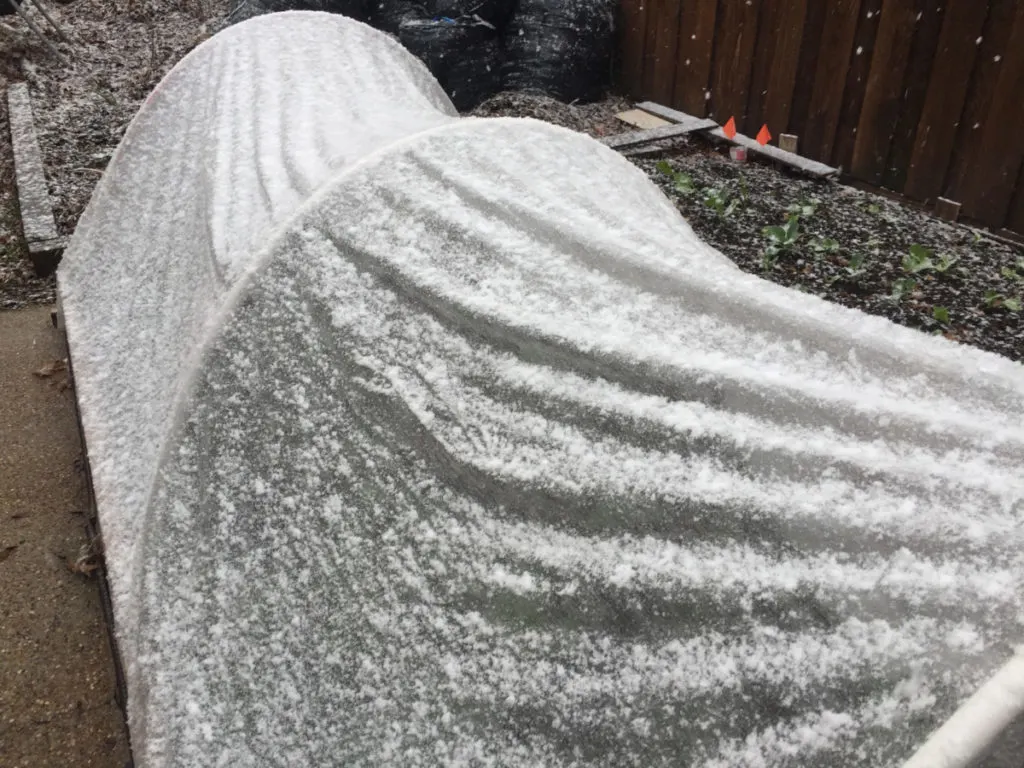
Other cold-hardy options include root vegetables like carrots, turnip, kohlrabi, parsnips, radishes, and beets. Plant these crops out into the garden in late summer through autumn – the sooner you can get them in the ground the better. Apply a thick layer of mulch as the temperatures drop.
Though you likely won’t get to harvest these root veggies this year, the extra time to grow will ensure they are big and beautiful the following season.
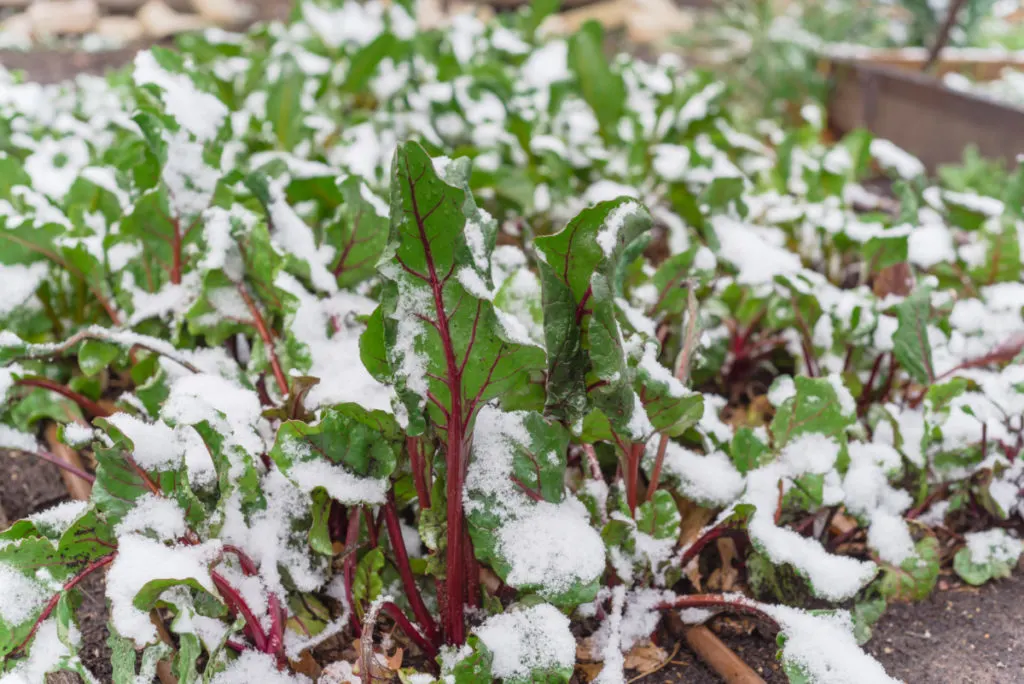
Like garlic and onions, root vegetables will go dormant in winter but will kick things back into high gear as soon as the soil warms up in early spring.
Read more: 10 Vegetables to Plant in Fall for an Early Spring Harvest
4. Start Your Edible Perennials
We often think of springtime as the best time to plant up the garden. But when it comes to perennials, the growing conditions in fall are far better suited to these seemingly immortal cultivars.
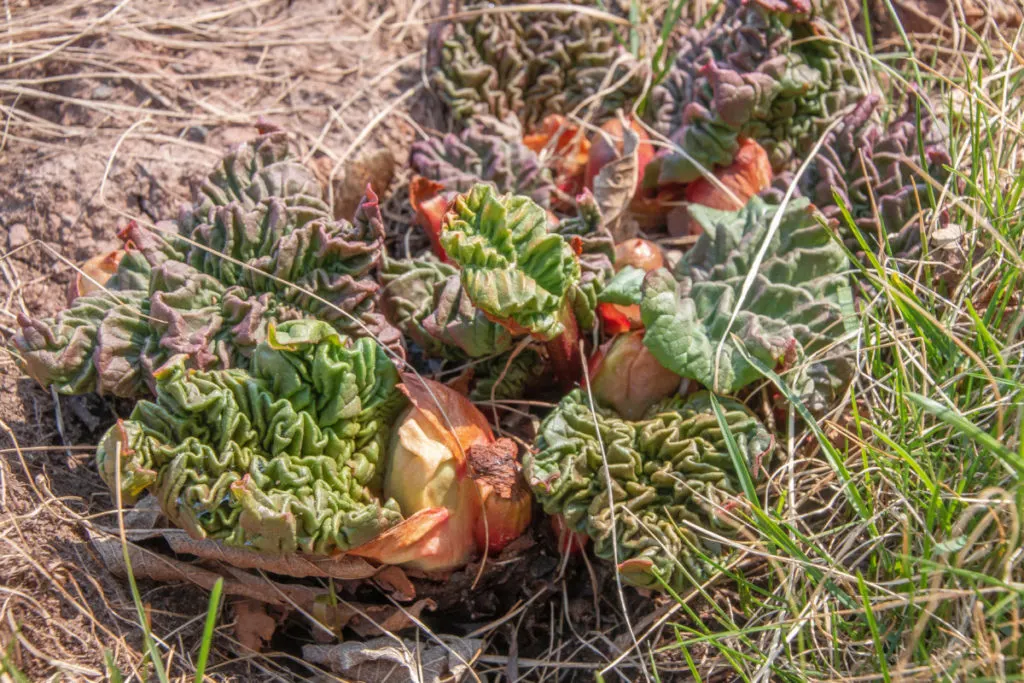
Perennial plants are perfectly in tune with the changing of the seasons. Though the tops will certainly die back in sub-zero temperatures, their root systems will continue to grow right up until the ground freezes solid.
In autumn, roots will establish more quickly because the soil is still warm. By contrast, perennials planted in spring will have slower root formation since the soil will still be fairly cold when they go in.
Asparagus, artichoke, rhubarb, horseradish, lovage, blueberries, and so many more, will be hardier and more established once spring rolls back around.
Read more: 10+ Edible Perennials to Plant in Fall
5. Improve Your Soil
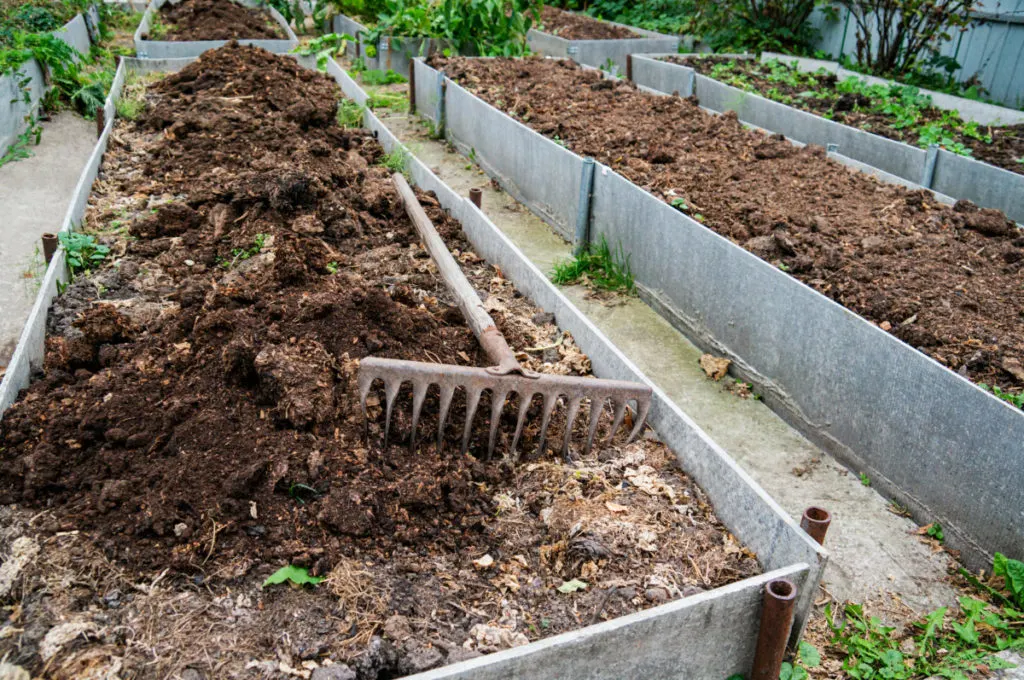
Nurturing plant life often takes center stage when it comes to gardening. But just as important (if not more so) is caring for the health of your soil.
And after a long and fruitful growing season, the soil in your garden or raised beds will be fairly depleted of most key nutrients and minerals.
Take advantage of the downtime in the fall to prepare the soil for next spring.
To ensure your soil is healthy, fertile, and teeming with microbial life, simply add more organic matter.
This could be finished compost. Or aged chicken manure. Or biochar. Or leaf mold.
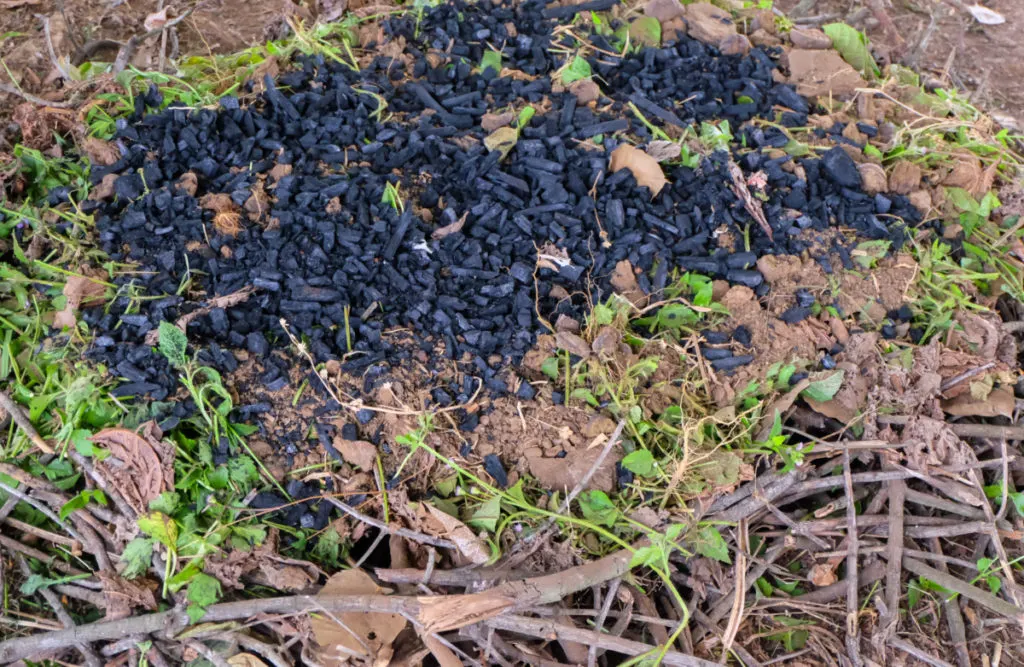
Topdressing the soil with a carbon-rich organic material will keep the soil microorganisms well-fed and active. These little guys in turn will improve soil structure, make nutrients available to plants, buffer pH levels, and provide resistance to pests and disease.
Some folks like to add fresh livestock manure or just-harvested compost to the tops of the beds in autumn to let it age in place over winter. In early spring, beds are turned over and given one more month to rot down before planting.
Read more: 15 Practical Ways to Improve Your Garden Soil
6. Grow Green Manures
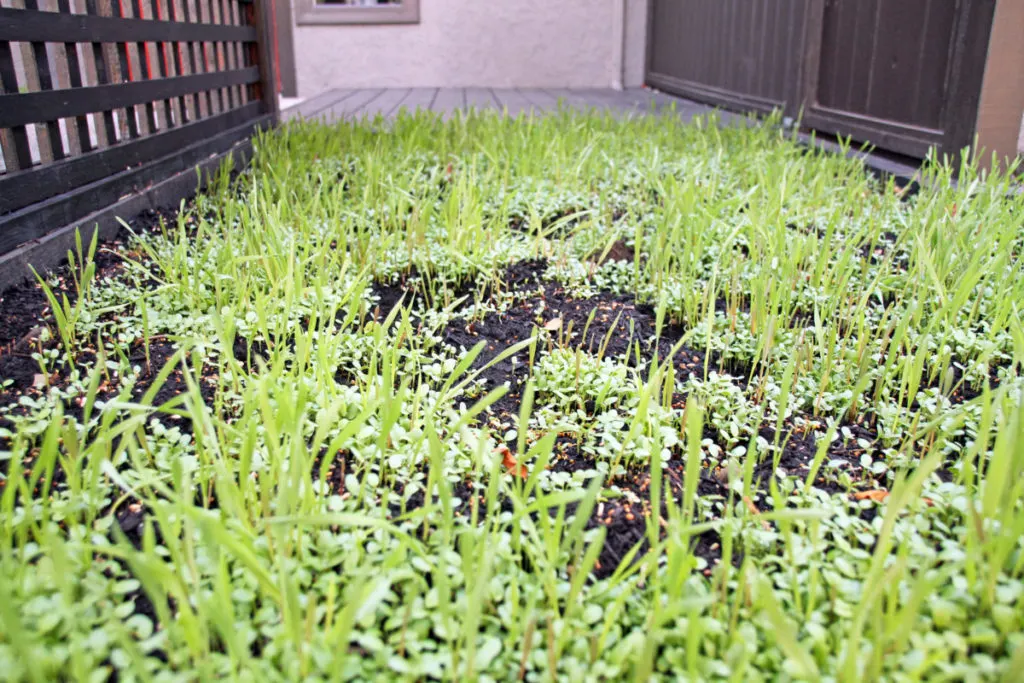
Another fantastic way to maintain healthy soil over the winter months is to sow cover crops in your empty beds in the fall.
Growing green manures is particularly useful in no-dig gardens since the soil is never disturbed throughout the entire process.
Sown in autumn, green manures will grow until the inevitable die back in winter. Leave them where they are until spring. Then you can chop them down (leaving their root systems in the ground) and scatter their remains over the surface of the soil.
Filling an empty garden with green manures has several advantages over leaving beds bare.
The roots of plants anchor the soil in place, preventing runoff, erosion, and compaction caused by heavy rains and snow.
When you choose clover, alfalfa, beans, or other nitrogen fixers as your cover crops, you’ll also replenish the soil with key nutrients.
Plant them densely and green manures will help keep your beds free of weeds too.
Read more: 5 Soil Improving Green Manures for the Winter Months
7. Apply a Fall Mulch
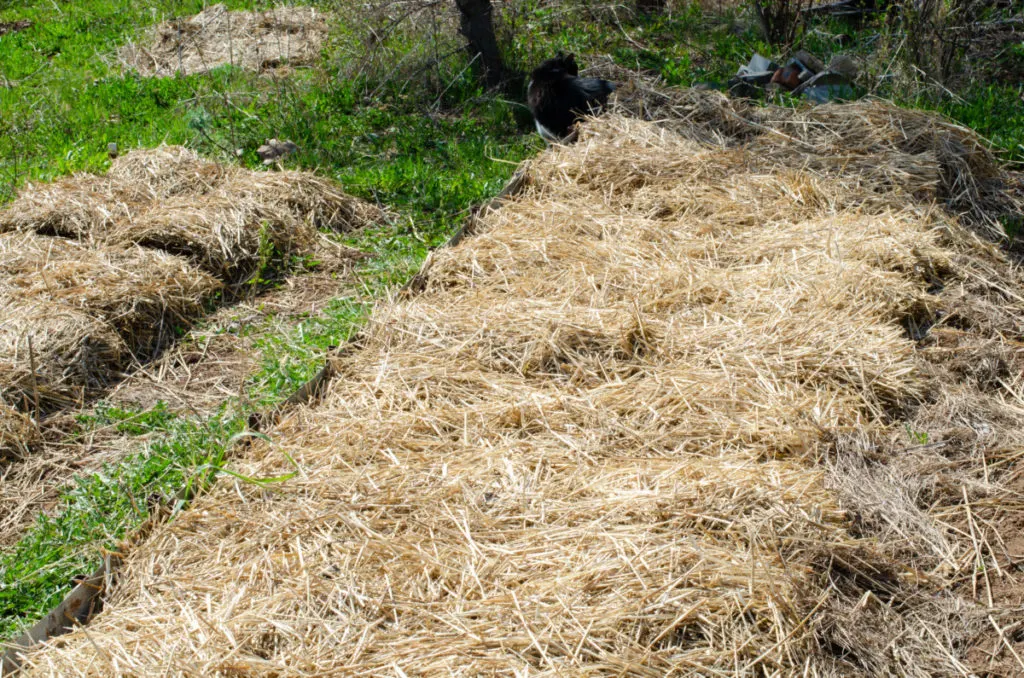
Planted up or not, the vegetable garden shut down would not be complete without a top dressing of mulch as the last step.
Covering up empty beds will add a protective barrier over the bare soil. Like tucking the garden in for a long and chilly nap, mulch will weigh the soil down and shield it from winds, rain, and snow.
Mulching helps keep the soil intact, lessening erosion, compaction, and runoff. Choose an organic mulch and you’ll be adding in some fertility as well. Applying mulch now also means there will be far fewer weeds to pull in spring.
There’s no shortage of options when sourcing garden mulch.
Classic choices such as straw, sawdust, and wood chips are always a good bet.
Look around your yard and you might find other free mulches – grass clippings, autumn leaves, pine needles, and pine cones would all make excellent mulches.
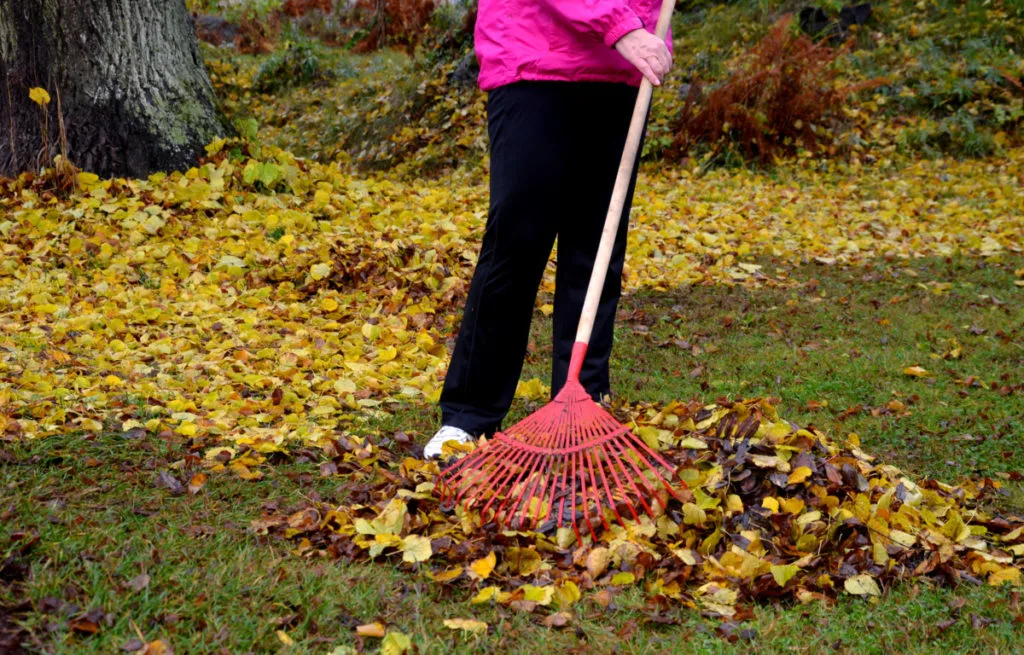
In a pinch, a few layers of cardboard (or several layers of newspaper) would do the trick too.
Read more: 6 Reasons to Mulch Your Garden This Fall + How to Do it Right
Bonus Idea: Add Worms
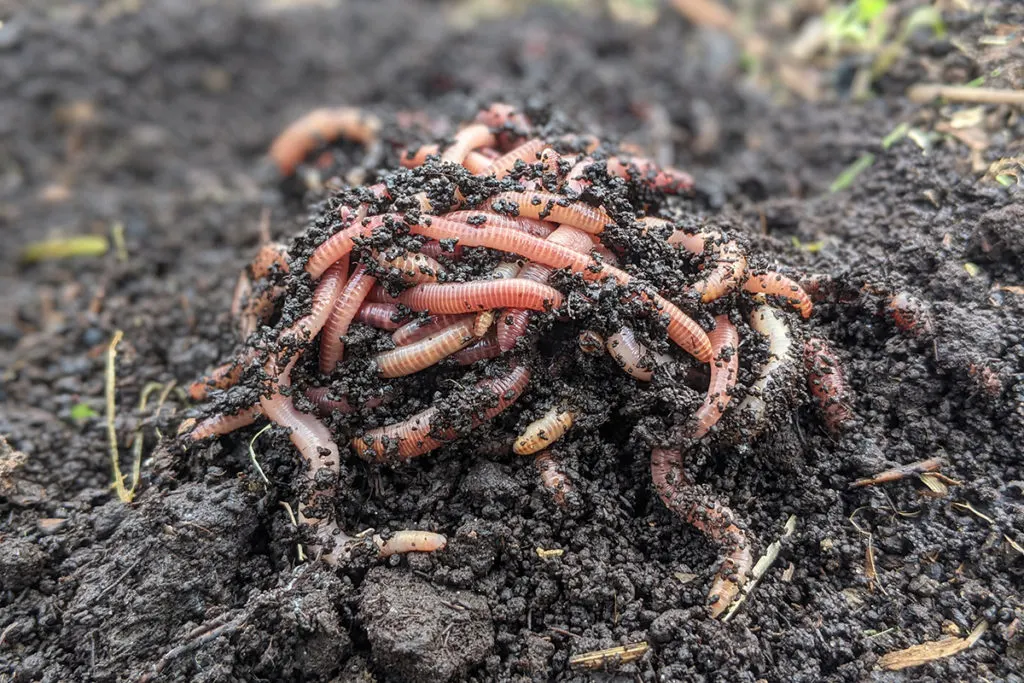
Spring is traditionally the time to add worms to the soil, but fall works, too. As long as the temperature is above 32F and the ground isn’t frozen you can drop a big old box of live worms on the soil and allow them to work their magic.
Rural Sprout editor, Tracey, did just that and claims it was the best $35 she’d ever spent in the garden.
Read all about what she did and see her before and after soil photos here.
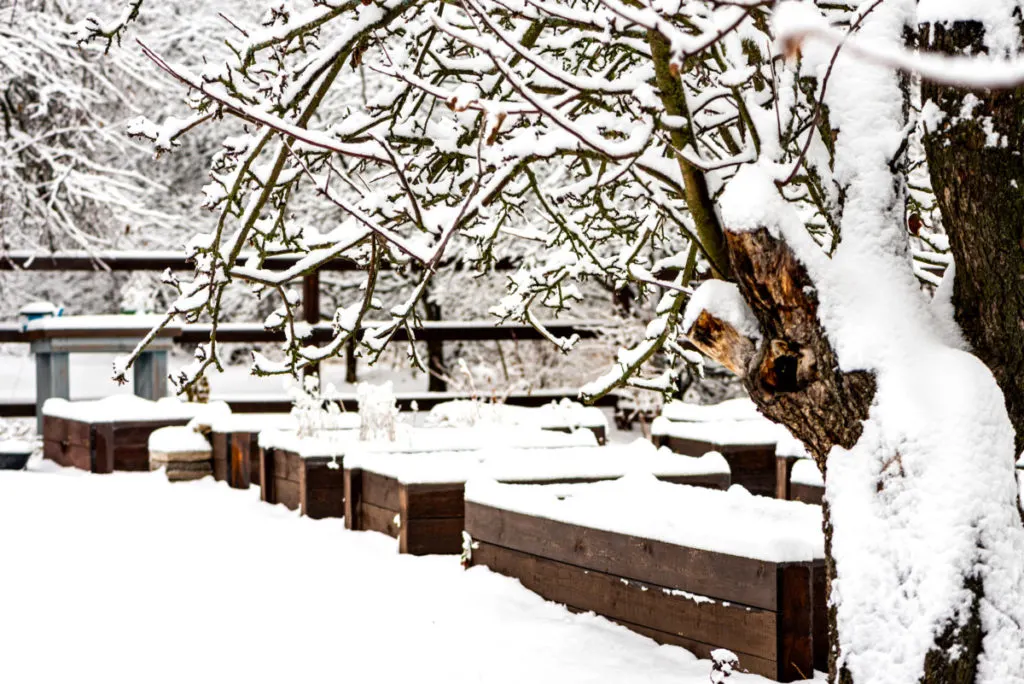

Get the famous Rural Sprout newsletter delivered to your inbox.
Including Sunday musings from our editor, Tracey, as well as “What’s Up Wednesday” our roundup of what’s in season and new article updates and alerts.

